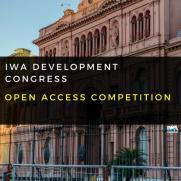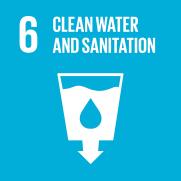 Blue-Green Systems: launching in 3 cities across the globe!
Blue-Green Systems: launching in 3 cities across the globe!
We are thrilled to be launching our latest IWA Publishing journal, Blue-Green Systems in 3 major cities across the globe in the next 3 weeks: Xi'An, China; Tokyo, Japan; Palermo, Italy.
 H2Open Journal welcomes new Editor in Chief
H2Open Journal welcomes new Editor in Chief
H2Open Journal, IWA Publishing's fully Open Access journal is pleased to welcome Ashok Chapagain to its team of Editors-in-Chief.
 IWA Development Congress - Open Access Waiver Competition
IWA Development Congress - Open Access Waiver Competition
In honor of this year's IWA Development Congress in Buenos Aires, we gave delegates the chance to win a 100% fee waiver to publish their paper Open Access in any one of our 12 IWA Journals.
...
 Secondary Settling Tanks: Theory, Modelling, Design and Operation
Secondary Settling Tanks: Theory, Modelling, Design and Operation
ISBN: 9781900222037
Scientific and Technical Reports No. 6
It is hoped that with the publication of this STR, written by consulting and research engineers from different continents and with different backgrounds and experience, the need is met at least in part for a compilation of up-to-date international development in SST design, practice and research over the past two decades. Each chapter ends with research needs that the authors offer as directions for further research and development in this area.
Leading Edge Technologies 2017 series: Chongrak Polprasert & Thammarat Koottatep
To celebrate the Leading Edge Conference on Water and Wastewater Technologies (LET 2017), we spoke to key authors and editors about the event and exciting technological developments in the field.
Leading Edge Technologies 2017 series: Ivan Kozyatnyk
To celebrate the Leading Edge Conference on Water and Wastewater Technologies (LET 2017), we spoke to key authors and editors about the event and exciting technological developments in the field.
Leading Edge Technologies 2017 series: Wolfgang Rauch
To celebrate the Leading Edge Conference on Water and Wastewater Technologies (LET 2017), we spoke to key authors and editors about the event and exciting technological developments in the field.
 What needs to change to achieve access to sanitation for all by 2030?
What needs to change to achieve access to sanitation for all by 2030?
Andrés Hueso, Senior Policy Analyst for Sanitation at WaterAid, discusses the opportunities and challenges involved in global prioritisation of sanitation and water for all.
Would the poor slum dweller contribute financially for water supply and why?
Following the publication of research from 23 slums of Kolkata, India, author Indranil De considers the willingness of different ethnic groups to pay for better water supply and the factors that affect this.
A new approach for studying the operation of a secondary sedimentation tank (SST)
Lucio Pezza, expert on the management, control and maintenance of water and wastewater treatment plants, covers some key concerns of his new article on the operation of secondary sedimentation tanks (SSTs).